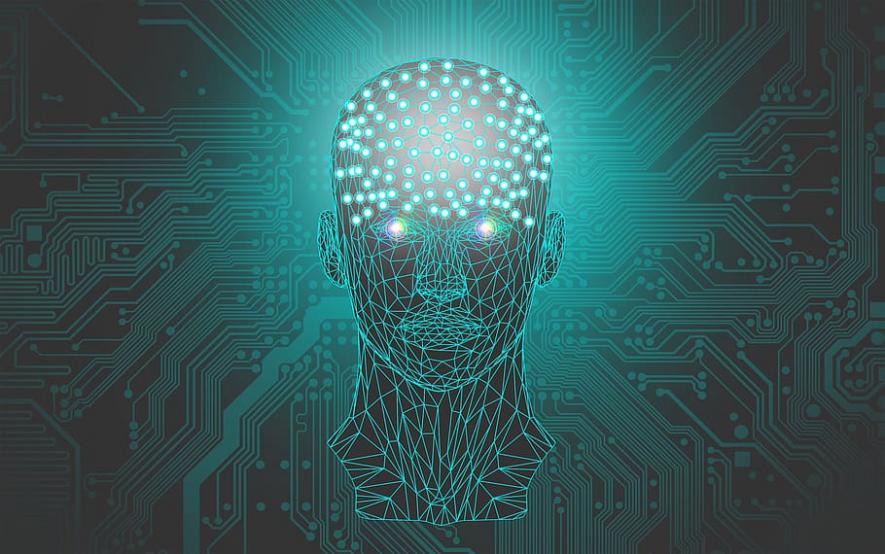Artificial Intelligence: Profit Versus Freedom

Image Courtesy: Wallpaper Flare
Artificial Intelligence (AI) presents a profit opportunity for capitalists, but it presents a crucial choice for the working class. Because the working class is the majority, that crucial choice confronts society as a whole. It is the same profit opportunity/social choice that was presented by the introduction of robotics, computers, and indeed by most technological advances throughout capitalism’s history. In capitalism, employers decide when, where, and how to install new technologies; employees do not. Employers’ decisions are driven chiefly by whether and how new technologies affect their profits.
If new technologies enable employers to profitably replace paid workers with machines, they will implement the change. Employers have little or no responsibility to the displaced workers, their families, neighbourhoods, communities, or governments for the many consequences of jobs lost. If the cost to society of joblessness is 100 whereas the gain to employers’ profits is 50, the new technology is implemented. Because the employers’ gain governs the decision, the new technology is introduced, no matter how small that gain is relative to society’s loss. That is how capitalism has always functioned.
A simple arithmetic example can illustrate the key point. Suppose AI doubles some employees’ productivity. During the same work time, they produce twice as much as before the use of AI. Employers who use AI will then fire half of their employees. Such employers will then receive the same output from the remaining 50% of their employees as before the introduction of AI.
To keep our example simple, let’s assume those employers then sell that same output for the same price as before. Their resulting revenues will then likewise be the same. The use of AI will save the employers 50% of their former total wage bills (less the cost of implementing AI) and those savings will be kept by employers as added profit for them. That added profit was an effective incentive for the employer to implement AI.
If we imagine for a moment that the employees had the power that capitalism confers exclusively on employers, they would choose to use AI in an altogether different way. They would use AI, fire no one, but instead cut all employees’ working days by 50% while keeping their wages the same.
Once again, keeping our example simple, this would result in the same output as before the use of AI, and the same price for the goods or services and revenue inflow would follow. The profit margin would remain the same after the use of AI as before (minus the cost of implementing the technology). The 50% of employees’ previous workdays that are now available for their leisure would be the benefit they accrue. That leisure—freedom from work—is their incentive to use AI differently from how employers did.
One way of using AI yields added profits for a few, while the other way yields added leisure/freedom to many. Capitalism rewards and thus encourages the employers’ way. Democracy points the other way. The technology itself is ambivalent. It can be used either way.
Thus, it is simply false to write or say—as so many do these days—that AI threatens millions of jobs or jobholders. Technology is not doing that. Rather the capitalist system organises enterprises into employers versus employees and thereby uses technological progress to increase profit, not employees’ free time.
Throughout history, enthusiasts celebrated most major technological advances because of their “labour-saving” qualities. Introducing new technologies would deliver less work, less drudgery, and less demeaning labour. The implication was that “we”—all people—would benefit. Of course, capitalists’ added profits from technical advances no doubt brought them more leisure. However, the added leisure and new technologies made possible for the employee majority was mostly denied to them. Capitalism—the profit-driven system—caused that denial.
Today, we face the same old capitalist story. The use of AI can ensure much more leisure for the working class, but capitalism instead subordinates AI to profiteering. Politicians shed crocodile tears over the scary vista of jobs lost to AI. Pundits exchange estimates of how many millions of jobs will be lost if AI is adopted. Gullible liberals invent new government programmes aimed to lessen or soften AI’s impact on employment. Once again, the unspoken agreement is not to question whether and how the problem is capitalism nor to pursue the possibility of system change as that problem’s solution.
In an economy based on worker coops, employees would collectively be their own employers. Capitalism’s core structure of enterprises—the employer versus employee system—would no longer prevail. Implementing technology would then be a collective decision democratically arrived at. With the absence of capitalism’s employer versus employee division, the decision about when, where, and how to use AI, for example, would become the task and responsibility of the employees as a collective whole. They might consider profitability of the enterprise among their goals for using AI, but they would certainly also consider the gain in leisure that this makes possible. Worker coops make decisions that differ from those of capitalist enterprises. Different economic systems affect and shape the societies in which they operate differently.
Across capitalism’s history, employers and their ideologues learned how best to advocate for technological changes that could enhance profits. They celebrated those changes as breakthroughs in human ingenuity deserving everyone’s support. Individuals who suffered due to these technological advances were dismissed as, “the price to pay for social progress.” If those who suffered fought back, they were denounced for what was seen as anti-social behaviour and were often criminalised.
As with previous technological breakthroughs, AI places on society’s agenda both new issues and old contentious ones. AI’s importance is NOT limited to productivity gains it achieves and job losses it threatens. AI also challenges—yet again—the social decision to preserve the employer-employee division as the basic organisation of enterprises. In capitalism’s past, only employers made the decisions whose results employees had to live with and accept. Maybe with AI, employees will demand to make those decisions via a system change beyond capitalism toward a worker-coop based alternative.
Richard D. Wolff is professor of economics emeritus at the University of Massachusetts, Amherst, and a visiting professor in the Graduate Program in International Affairs of the New School University, in New York. Wolff’s weekly show, “Economic Update,” is syndicated by more than 100 radio stations and goes to 55 million TV receivers via Free Speech TV.
SOURCE: Independent Media Institute
CREDIT LINE: This article was produced by Economy for All, a project of the Independent Media Institute.
Get the latest reports & analysis with people's perspective on Protests, movements & deep analytical videos, discussions of the current affairs in your Telegram app. Subscribe to NewsClick's Telegram channel & get Real-Time updates on stories, as they get published on our website.
























